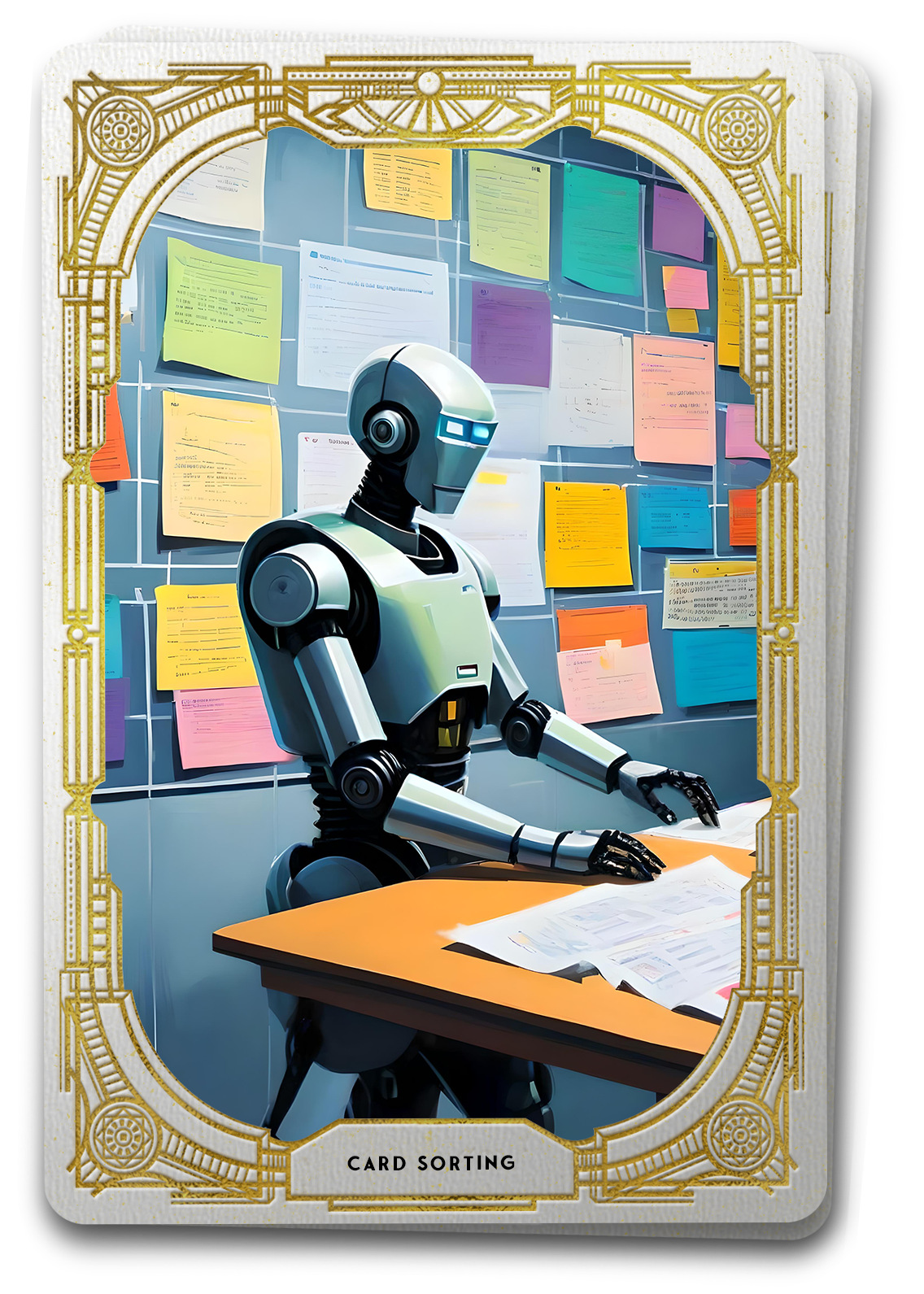
The Tarot Reveals Serial Position Effect:
Users will remember the first and last things they see, but forget the stuff in the middle.
Picture yourself strolling down the cereal aisle of a digital supermarket, a place where information is neatly stacked in rows, strategically organized to draw your attention. In this expansive cereal aisle of design possibilities, the Serial Position Effect acts as a guiding principle, shaping how users engage with and remember the contents. In the world of user experience design, the Serial Position Effect might explain the cereal position architects chose to place the information on the aisles of this digital supermarket, but can also describe the experience of savoring the first crunchy bite of your favorite cereal that awakens your senses and last milky spoonfuls that satisfy your hunger. As users, we typically remember what comes in the beginning and at the end of an experience, but rarely the substance of the bowl in between. In UX, this concept influences designers to strategically place key information at the beginning and end of a user’s journey, crafting an experience that leaves a lasting impression, much like the cherished moments of a flavorful breakfast.
Understanding the Mechanism
The Serial Position Effect originates from cognitive psychology, with roots tracing back to Hermann Ebbinghaus’ pioneering studies in the late 19th century. Ebbinghaus explored memory and retention, discovering a consistent pattern: enhanced recall for the first and last items in a list or sequence. This fundamental cognitive bias has since become a cornerstone in understanding human memory processes.
In Ebbinghaus’ experiments, participants were presented with lists of items to memorize, and then asked to recall the items in any order. What Ebbinghaus discovered was a consistent pattern: individuals were more likely to remember the items presented at the beginning (primacy effect) and the end (recency effect) of the list, while those in the middle were often less well-recalled. This pattern became known as the Serial Position Effect, offering insights into the mechanics of memory retrieval.
Subsequent research has further explored and confirmed the robustness of the Serial Position Effect in various contexts. Neuroscientific studies using imaging techniques, such as functional magnetic resonance imaging (fMRI), have provided insights into the neural processes associated with the primacy and recency effects. These studies often highlight the involvement of different brain regions during encoding and retrieval of information presented at the beginning and end of a sequence.
Moreover, the Serial Position Effect has been observed not only in controlled laboratory settings but also in real-world scenarios, including educational contexts, advertising, and, significantly, user experience design. The principles derived from these studies can be instrumental in shaping design strategies to optimize user interfaces, information presentation, and overall user experiences.
In practical terms, this effect manifests as users engaging with digital content in a sequence – from reading a list of features to completing a multi-step process. The opening elements capture immediate attention, while the concluding ones leave a lasting impression. Understanding this cognitive bias is like crafting the perfect cereal aisle. It provides designers with a strategic advantage in creating user experiences that align with the inherent workings of memory.
Practical Tactics for Applying the Serial Position Effect in UX Design
Strategic Content Arrangement:
- Beginning Emphasis: Place critical information at the start of a sequence, knowing that users are more likely to engage with and remember it.
- Memorable Closure: Conclude sequences with impactful elements, such as a strong call-to-action or key information, maximizing the chance of lasting recall.
Navigation and Information Hierarchy:
- Primary Navigation: Design user interfaces with essential navigation options positioned prominently at the outset, ensuring users quickly access crucial sections.
- Lasting Impressions: The final screen or page should leave users with a strong concluding message, creating a memorable end to their interaction.
Form Design Optimization:
- Critical Fields First: In forms, prioritize placing essential fields at the beginning to enhance accuracy and completeness.
- Positive Confirmation: After form submission, provide a clear and positive confirmation message to create a positive concluding experience.
Content Presentation Strategies:
- Initial Engagement: Craft headlines and introductory content to be engaging and informative, capturing users’ attention from the start.
- Closing Impact: Conclude articles or sections with compelling summaries or statements, ensuring users leave with a strong impression.
Design Considerations
Mitigating Middle Element Neglect:
- Recognize that the middle elements in a sequence might not receive as much attention or retention. Designers should consider ways to enhance engagement with these elements, such as visual cues or strategic placement – or strategically place less relevant content in this position.
User Flow Optimization:
- Understand that users follow a cognitive path, emphasizing the importance of optimizing user flows to align with the Serial Position Effect. Ensure that the journey logically progresses from initiation to conclusion.
Consistency in Design Patterns:
- Employ consistent design patterns throughout sequences to reinforce user expectations. This consistency aids users in navigating through the digital interface, reducing cognitive load.
A Bonus Prize in Every Box
And while it’s fun to keep forcing cereal and serial breakfast metaphors into this essay, it is important to understand this UX theory extends beyond the Serial Position Effect, intertwining with other cognitive phenomena such as the Zeigarnik Effect and Selective Attention. Just as you find yourself curious about the contents of a cereal aisle yet to be fully explored, the Zeigarnik Effect tells us that incomplete or unresolved elements captivate the mind more effectively. Thus, designers can strategically leave certain elements unresolved, leveraging users’ inherent curiosity to encourage continued engagement and enhance memory retention.
Moreover, as users navigate the our digital cereal aisle, the principles of Selective Attention come into play. Much like your eyes gravitating toward the most visually appealing cereal box, users naturally focus on specific stimuli within a digital interface. Designers can leverage this knowledge to strategically highlight crucial elements, ensuring they capture users’ attention amidst the vast array of information.
In essence, the trio of the Serial Position Effect, Zeigarnik Effect, and Selective Attention forms a harmonious ensemble in UX design. The primacy and recency effects guide content placement for optimal recall, the Zeigarnik Effect introduces an element of intrigue, and an understanding of selective attention ensures that users notice and engage with key elements. Together, these cognitive principles create an orchestration of user experience that resonates with the inherent workings of human memory and attention.
When considering architecture strategies in your digital offerings, the Serial Position Effect emerges as a pivotal aspect of UX design, grounded in the principles of cognitive psychology. Its influence extends beyond mere recognition, shaping the very fabric of user experiences. Designers who comprehend and strategically apply this cognitive bias can craft interfaces that resonate with the natural tendencies of human memory, creating experiences that are both intuitive and memorable. As digital landscapes continue to evolve, the Serial Position Effect will remain an indispensable tool in the designer’s arsenal, offering a lens through which to optimize the structure and impact of user interactions. But first, enjoy your morning cereal. It is the most important meal of the day.





